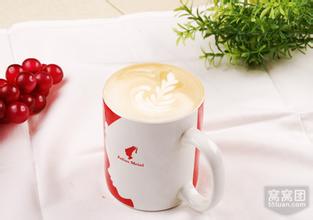A brief introduction to the description of the flavor and aroma characteristics of El Qomolangma coffee with a long finish

Pacamara is the artificial breeding variety of Pacas and Maragogipe. It was first cultivated by researchers in El Salvador in 1958. Pacamara is an excellent variety under rare artificial breeding, which is better than blue, and perfectly inherits the advantages of the mother plant. Both the excellent taste of Pacas and the large size of Maragogipe are inherited by raw bean granules. The bean body is at least 70% and 80% of that of elephant beans, with more than 17 orders and more than 100% and more than 18 eyes. Average bean length 1.03 cm (general bean about 0.8-0.85 cm) average bean width 0.71 cm (general bean about 0.6-0.65), thickness 0.37 cm, bean shape plump and round. The biggest feature of this variety is that it is sour, lively and tricky, sometimes biscuit, sometimes fruity, thick and greasy. The quality is the best from El Salvador and Guatemala.
El Salvador boutique coffee is concentrated in the volcanic rock producing areas of Santa Ana in the west and Charantanan fruit in the northwest. In recent years, the top 10 cup tests are almost entirely from these two producing areas, with an altitude of about 9-1500 meters, mainly bourbon (68%). Followed by Pacas (29%), mixed-race Pakamara, Dulaai and Kaddura accounted for only 3%.
The coffee harvest lasts from November to March. The fresh fruit of coffee is picked by hand.
On the whole, Salvadoran coffee inherits the mild quality of Sino-American coffee, which is soft, slightly sour and has beautiful sweetness. At the same time, it also has its own characteristics: the aromatic taste is slightly sour and very soft; it is pure and has no miscellaneous flavor, and the taste balance is excellent; the smooth feeling like cream chocolate is impressive; the dense feeling of coffee in the mouth gives the coffee a deep taste and a long finish.
Born
Country of origin: El Salvador
Agricultural garden name: Saint saliva farm production period: 2006 / 2007
Defect specification: 6 defects / 300g size specification: more than 18 mesh 95%
Pacamara, a variety of coffee trees, is a hybrid of Bourbon and giant beans.
Flowering period: April to May harvest time: December to March
Other: the processing method is completely washed, 100% natural drying, the origin standard is 1250m-1350m, there is JAS certification (organic certification).
Personal taste: use utensils: HARIO V60 hand filter cup, Philharmonic pressure. Smooth taste, balanced taste, obvious late acidity, slight chocolate aroma, obvious taste changes. This kind of bean is suitable for friends who try high-quality beans for the first time.
The water temperature of the source is 85 degrees. A 2-inch pipe is used to direct the water to six hot spring pools at different elevations. The temperature at the sixth hot spring pool is 32-34 degrees, and then the cooled hot spring water is used to process raw coffee beans.
This hot spring water keeps flowing all the year round. Local people drink this hot spring. Its PH value is 8.02. It contains ingredients that make coffee sweet. Santa Teresa (Christmas Hot Spring) processing plant uses 100% geothermal energy, and the water used to wash coffee is also 100% hot spring mineral water. The interesting thing about the hot spring coffee in Christmas Garden is that its refining method is secret. Hot spring water rich in minerals is used to process raw coffee beans. The location of this farm is rich in volcanic soil and rich in natural hot spring water, so raw beans are all processed with this natural hot spring water; there are many farms in the world that grow coffee, but this method is still rare. It is called hot spring coffee because of its special washing method, and all of its raw beans are processed using local natural hot spring water. This kind of coffee is called "Onsen" coffee by the Japanese. Onsen refers to hot springs in Japanese and is very popular in Japanese hot springs. So needless to say, the biggest market for this kind of hot spring coffee is Japan.
Hot spring coffee comes from El Salvador's unique high-grade variety Pacamara, a hybrid of Pacas Pacas (a sudden variant of bourbon found in El Salvador) and giant bean Maragogype (a sudden mutation of Tibica found in Brazil).
El Salvador boutique coffee is concentrated in the volcanic rock producing areas of Santa Ana in the west and Charantanan fruit in the northwest. In recent years, the top 10 cup tests are almost entirely from these two producing areas, with an altitude of about 9-1500 meters, mainly bourbon (68%). Followed by Pacas (29%), mixed-race Pakamara, Dulaai and Kaddura accounted for only 3%.
The coffee harvest lasts from November to March. The fresh fruit of coffee is picked by hand.
On the whole, Salvadoran coffee inherits the mild quality of Sino-American coffee, which is soft, slightly sour and has beautiful sweetness. At the same time, it also has its own characteristics: the aromatic taste is slightly sour and very soft; it is pure and has no miscellaneous flavor, and the taste balance is excellent; the smooth feeling like cream chocolate is impressive; the dense feeling of coffee in the mouth gives the coffee a deep taste and a long finish.
Important Notice :
前街咖啡 FrontStreet Coffee has moved to new addredd:
FrontStreet Coffee Address: 315,Donghua East Road,GuangZhou
Tel:020 38364473
- Prev

A brief introduction to the description of flavor and aroma characteristics of artificial hybrid variety Golden Kaduai Coffee
Kaduai is an artificial hybrid of Kaddura and Mondu Novo. Kaduai has a good ability to resist natural disasters, especially wind and rain. Kaduai tree species are relatively low, compared with other coffee trees, the fruit of Kaduai is stronger and harder to pick. The fruit is both red and yellow. So far, it has not been found that yellow fruit is better than red fruit.
- Next

A brief introduction to the history and culture of the origin and development of coffee beans on Mount Everest in El Salvador
UCAFES:Organization of coffee producity cooperatives of el salvador, a coffee organization, accounts for 25% of the total output; UCRAPROBEX:Organization of Land Reform Coffee Producing Processing Cooperatives, including small farmers without land before the land reform, accounts for 10% of the total output; ABECAFE:Assoc
Related
- Detailed explanation of Jadeite planting Land in Panamanian Jadeite Manor introduction to the grading system of Jadeite competitive bidding, Red bid, Green bid and Rose Summer
- Story of Coffee planting in Brenka region of Costa Rica Stonehenge Manor anaerobic heavy honey treatment of flavor mouth
- What's on the barrel of Blue Mountain Coffee beans?
- Can American coffee also pull flowers? How to use hot American style to pull out a good-looking pattern?
- Can you make a cold extract with coffee beans? What is the right proportion for cold-extracted coffee formula?
- Indonesian PWN Gold Mandrine Coffee Origin Features Flavor How to Chong? Mandolin coffee is American.
- A brief introduction to the flavor characteristics of Brazilian yellow bourbon coffee beans
- What is the effect of different water quality on the flavor of cold-extracted coffee? What kind of water is best for brewing coffee?
- Why do you think of Rose Summer whenever you mention Panamanian coffee?
- Introduction to the characteristics of authentic blue mountain coffee bean producing areas? What is the CIB Coffee Authority in Jamaica?

